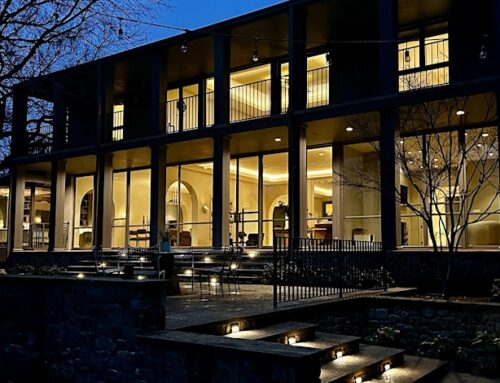
The Disney Streets are named after fairytales, which is fitting considering the storybook-like quality of the neighborhood. The streets are lined with sprawling lawns and neatly manicured flowerbeds. Kids here still play in their front yards, and most neighbors know each other by first name.
But in this quaint corner of Dallas, a battle is brewing. On one side are neighbors who want the city to rezone the area as a conservation district, and on the other side are those who oppose such a designation.
“This issue is pitting neighbors against neighbors — it’s horrible,” says Nicki Conner, who opposes the conservation district and has lived on Candlelight Lane for 12 years.
Back in fall 2006, a group of neighbors petitioned the city for a study to explore the possibility of a conservation district there. In essence, the proponents want to limit how large a new house can be.
In other parts of our neighborhood, builders have been tearing down older homes to make way for much larger homes, commonly dubbed “McMansions”. The idea behind the conservation district is to keep that trend out of the Disney Streets.
“The teardowns are just beginning across Midway, so they’re getting closer to us,” says Kiki Paschall, who has lived on Cinderella Lane for 36 years and supports the conservation district. Her home, like most in the neighborhood, was built during the post World War II boom.
“This neighborhood was the first in Dallas to have modern ranch-style homes. Pinocchio Street was featured in the Parade of Homes back in 1954. I like the history and overall feel of our neighborhood, so it’s important to me that we keep out the McMansions.”
The proposed conservation district would still allow for teardowns, but rebuilds would have to meet a set of specific guidelines. For example, rooftops would be capped at a set height to keep with the look of the neighborhood.
“We’re not opposed to people building new homes here — we know we can’t stop teardowns,” Paschall says. “We just want to temper what is being rebuilt and make sure that it fits with what’s already here.”
Jimmy Langkop, who has lived on Aladdin Lane for 29 years, is against the conservation district because he says it doesn’t make sense in the Disney Streets.
“There’s a place for conservation districts when you really have some unique architecture. But that’s not us. The value of our neighborhood is in its location, its large lots and mature trees,” Langkop says.
“Conservation districts are really abused because anyone can argue that something is special and worth saving — but we can’t make everything a conservation district.”
The existing Disney Street deed restrictions are sufficient to keep out McMansions, he says.
“Why fix what isn’t broken? Our deed restrictions already call for setbacks that don’t allow for McMansions, so we don’t need to involve the city and rezone our entire neighborhood. We don’t need to tamper with our property rights — that’s a door we don’t need to open.”
Right now, if a homeowner violates those deed restrictions, it’s up to the other homeowners to sue. But if the City Council ultimately passes the conservation district as an ordinance, the city would have the power to fine anyone who violates those restrictions.
Whitey Thomas, who has lived on Dwarfs Circle for 10 years, supports a conservation district. He says unless a homeowner plans to violate those deed restrictions, he or she shouldn’t mind involving the city.
“If you already intend to follow our deed restrictions when you move here, then why would you have a problem with making it enforceable by the city? You move here knowing our deed restrictions, and if you really plan to follow them, then it shouldn’t be a big deal if it’s enforceable by the city.”
But Conner says those enforceable restrictions will scare away new buyers and ultimately lead to a stagnant neighborhood. On its website, the Disney Streets residents opposed to the conservation district are calling it a “stagnation district”.
“Those new homes increase our property values, so they’re good for our neighborhood. I bought in this neighborhood because I knew progress was coming this way and our property values would go up, but this conservation district will put a stop to it. We are going to stunt the growth of our property values,” Conner says.
Conversely, Sherri Zeitman says those rebuilds would be bad for the neighborhood. She was raised in the Disney Streets, and she’s now living in her childhood home on Pinocchio Lane.
“When a neighborhood becomes a teardown neighborhood, builders move in and try to buy up the lots. So you only end up getting the value of land, not the house on it. They only pay you what the dirt is worth.”
One point both sides agree on is that there is too much misinformation about the conservation district being spread throughout the Disney Streets.
“There’s friction in this neighborhood because of wrong information out there,” she says. “We want everyone to get the facts and weigh out the pros and cons and make an informed decision.”
Right now, City Councilman Ann Margolin is among those trying to glean information so she can make a well-informed decision. If the proposed conservation district passes a homeowners’ vote and then is approved by the City Plan Commission, she and her fellow councilmen (who traditionally leave such zoning decisions up to the neighborhood’s councilman) ultimately will make the call.
“I’m still in the process of talking to people and learning about the issues,” she says. “I’m weighing out the pros and cons, and hearing what all the sides have to say.”
Zeitman says she hopes that’s exactly what other neighbors will do this fall during a series of public information sessions.
“At this point, all we’re asking is that all the neighbors sit down and have a discussion about the possibility of having a conservation district. We don’t want this to divide our neighborhood — we want this to be a community discussion where we all have a say.”
WHAT HAS HAPPENED SO FAR?
• In fall 2006, a group of homeowners petitioned its neighbors to see if they would be interested in the city conducting a study of the Disney Streets to determine if the area could qualify as a conservation district. After two-thirds of the affected homeowners signed the petition, the city launched its study.
• Since then, city planners have surveyed the Disney Streets. After determining that the area qualified as a potential conservation district, they took their findings to the City Plan Commission.
• The City Plan Commission has approved those findings, and signs alerting neighbors of possible zoning changes have been posted around the Disney Streets.
• The city selected volunteer members for the Disney Streets Steering Committee, which is made up of 21 homeowners — some of who support the conservation district, some who oppose it, and some who are undecided. That committee will hammer out the details of the proposed ordinance, deciding which finer points will make it into the document and which will be deleted.
WHAT WILL HAPPEN NEXT?
• The city attorney will write the final ordinance based on the committee’s recommendations.
• Homeowners will then vote whether to establish a conservation district by mailing in forms sent out by the city. If a majority votes in favor of it, then the ordinance will go before the City Plan Commission for zoning review.
• If the City Plan Commission approves the ordinance, it will go before the council for a vote. Although it’s not required, city councilmen typically vote with the councilman representing that district, which in this case is Ann Margolin.






